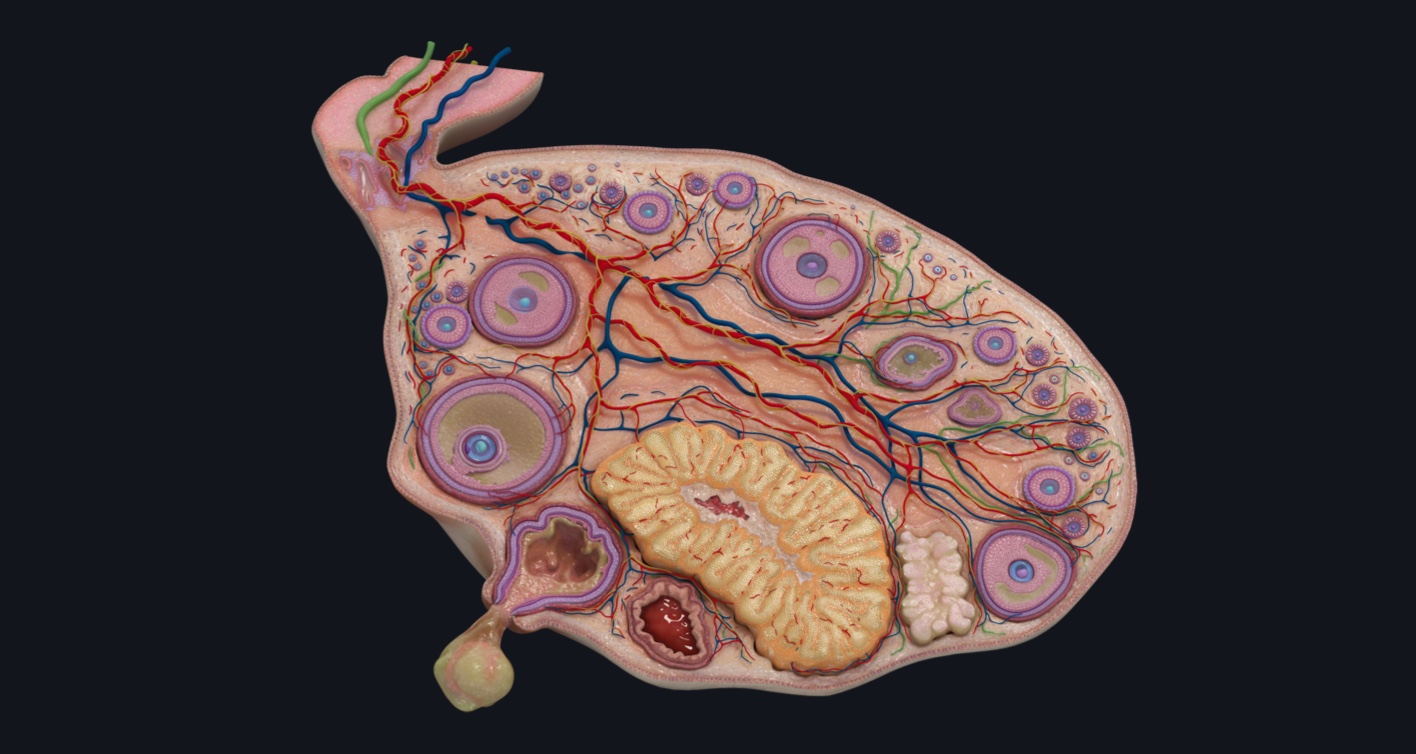
If you’re reading this article, you may already know what the ovaries are in the female reproductive system. They are two ovular structures about the size of an almond and each one lies at the sides of the pelvis. They hang by the mesovarium on the posterior aspect of the broad ligament, near the uterine tube.
Within the cortex of the ovary, the ovarian cycle takes place. It has three phases:
- The follicular phase
- Ovulation
- The luteal phase
Follicular- This happens in the first half of the cycle. At which the ovarian follicle matures, and the hormone estrogen is secreted. Another hormone known as follicle stimulating hormone (FSH) is secreted by your pituitary gland and many primary ovarian follicles grow at the same time. However, only one will reach full maturation and will then be known as a Graafian follicle.
Ovulation- In this phase the Graafian follicle ruptures and release of the mature ovum from the ovary takes place. This happens once every month, unless a woman is pregnant, in which case it does not occur. The time of ovulation is variable, but usually on the 14th day of the cycle. The cause of this is by the inhibition of FSH and stimulation of luteinizing hormone (LH) secretion. An increase in osmotic pressure ruptures the Graafian follicle.
Luteal- This phase is comprised of the formation of the corpus luteum and secretion of progesterone. From here the ovarian follicle passes into two stages:
- The corpus hemorrhagicum: The wall of the ovarian follicle collapses and folds in on itself. Bleeding occurs inside the follicle, forming a blood clot. This lasts about three days.
- The corpus luteum: Then the follicle transforms further. The granulose cells enlarge, become yellowish, and form the lutein. At the same time theca interna cells undergo similar changes and become caluteal cells. Capillaries form and absorb the blood clot inside the follicle. Small amounts of progesterone and estrogen are secreted. If there is fertilization, the corpus luteum persists for four months and then slowly degenerates as the placenta forms. If there is no fertilization the corpus luteum persists 9-14 days and then degenerates and becomes a fibrous body known as the corpus albicans.
Want to explore some of the structures mentioned above in more detail? Our Ovarian Cycle is one of 2 new Detailed Models hitting the platform at the end of this year, as part of the launch of our full female model.
